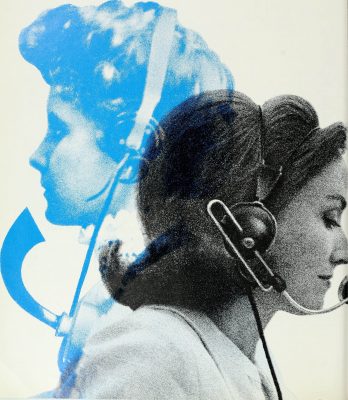Few book reviews open with amateur rap, but: ‘back in the day when new media was new,’ goes the first line of a song written and performed by Jaime Levy at famed music venue Webster Hall in New York in a 1998 Silicon Alley Talent Show. The performers were web pioneers from the 90s — New York Magazine in 2000, in a stroke of 90s genius, called them Netheads — trying to raise money for a new web development fund. Levy was one of the familiar figures on this scene: a punk-rock from California, she came to New York when she was 21 to study at NYU’s Interactive Telecommunications Program (ITP) and then made a name for herself as a digital publisher, initially distributing electronic magazines on floppy discs. She went on to become the creative director of Word magazine, an online magazine launched at a time when there were less than a thousand websites on the internet, most of them of the personal ‘Hey! Welcome to my Web site’ category. She also threw the wildest parties; many of her guests saw the web for the first time on Levy’s Macintosh II at drunken evenings in her East Village loft.
Back in the day when new media was new, the energy and excitement about the early web was as feverish as the speculation and money it created. Newly minted CEOs spent their dollars on parties where a new programme’s source code was projected on the wall and people stood in its shadow, drinking in honour of paper millionaires on both coasts of the United States. Back then, there were still many people who saw the internet as a vision of many futures that could be, before Silicon Valley won. Looking at how we got where we are now, two recent books, Claire Evans’s Broad Band: The Untold Story of the Women Who Made the Internet and Ellen Ullman’s Life in Code: A Personal History of Technology, survey the development of networked technology as the stories of the women who were there.
Ullman, whose novel The Bug is a cult favourite to many creative technologists, published her first book, Close to the Machine, a memoir about her life as a software engineer, in 1997. Early in Life in Code, she recounts a moment at a party where she tells a senior engineer about her decision to shift to consulting because she found ‘the engineering culture very teen-age boy puerile.’ He responded with regret, saying that much talent was lost that way. But before she could answer they were interrupted: a water-balloon fight was about to begin, and her interlocutor left with great enthusiasm.
Ullman’s book is a collection of essays spanning 1994 to 2016. Their subjects range from a look back to Y2K (or the ‘millennium bug’), to an examination of user-oriented programmes, and the fiction that everything can and should be ‘easy’ because the machine ‘has slowly absorbed into itself as many complications as possible’. She discusses politics and her personal life and the ways in which the two intersect with the technology industry. The story of how tech has changed San Francisco, the city in which Ullman lived for over 40 years, is recounted through her experience living in a loft in South of Market, a former industrial neighbourhood which is now home to the offices of Yelp, Uber, and Airbnb. Hers is a story of a life shaped by the early internet, one of the largest economic bubbles ever seen; she tells of her marriages and her cat (as compared to the robotic cat she bought once to see how this technology plays out in day-to-day life); she talks about the people she met and the parties she went to and the economics that built and crashed her world. It’s a story of disillusionment, too: ‘whatever excitement I’d had in 1999 about the internet was extinguished’, she writes in 2012.
Ullman recalls in Life in Code the kind of history Evans charts with her research, interviews, and memories. Broad Band begins in World War II, and charts a history of technology from the push in development of computers for military needs during the war up to the creation of video games directed at young girls. The book is an impressive feat of research, oral history, and personal commitment. In the introduction, which begins with an account of the Dell computer running MS-Dos she used as a teenage girl, Evans writes: ‘We so often consider the history of technology as a row of progressively smarter machines … anywhere along this line, it’s tempting to eulogise the box. To point to one and say, ‘the people who made this changed the world.’ This story is not about those people. This book is about women.’ Evans’s book does survey certain machines — the Mark I, developed at Harvard for the US Navy during World War II; its Philadelphia contemporary ENIAC, managed by a group of six women at the Moore School of Electrical Engineering at the University of Pennsylvania; or Resource One, a computer procured from the Transamerica Leasing Corporation for a socially inclined technological commune in San Francisco called Project One (Rolling Stone magazine called the commune getting the free computer ‘one of the great hustles of modern times’). But mainly, Evans’s interest lies with the women who built, programmed, and cared for these machines, and saw their inherent potential. Evans interviews several of these pioneers (each of whom could have merited a whole book), and she makes sure always to name them, resetting a history of the many forgotten men and (especially) women who forever changed contemporary life by building and programming computers.
Readers encounter Pam Hardt-English, a member of the South of Market warehouse commune Project One whose vision to digitise San Francisco’s counterculture by placing teletype terminals throughout the city ‘basically imagined the internet’ (in 1972, that is). There’s also Stacy Horn, the NYU graduate student who founded ECHO (East Coast Hang Out), a Bulletin Board System (BBS) used by a virtual community, in 1990. All you needed to join Echo was a phone line and modem, as well as a startup disc sent to you over mail by Horn. Echo was an East Coast version of the famous The WELL (Whole Earth ‘Lectronic Link), started by Steward Brand in 1985, only unlike The WELL Horn specifically encouraged women to join. At a time when women comprised only 10 to 15 percent of internet users, over 40 percent of Echo’s users were female. (1990s tagline: ‘Echo has the highest percentage of women in cyberspace — and none of them will give you the time of day.’) Evans’s focus on single women is a joy of storytelling, but also in line with the cult of personality that subsumes coverage of the technology industry, where (male) founders like Steve Jobs or Elon Musk essentially embody their companies in the public eye.
Evans dedicates a chapter to Dr. Radia Perlman, a software engineer who, when working for Digital Equipment Corporation, wrote the algorithm for the spanning-tree protocol, which connects computers across an Ethernet network. It solved the massive problem of building bridges along the network that would allow computers to send information across the same bandwidth at the same time. ‘Her work might be invisible to the everyday user,’ writes Evans, ‘but it’s invisible in the way that laws are invisible or the rules of traffic in a busy city: it directs the flow of information at a layer beyond our conscious awareness.’ Years later, at a high position at Intel, Perlman noted that ‘the more senior you get the fewer women there are there.’ Perlman was one of 50 women in a class of nearly a thousand at MIT in the early 70s, and has been called ‘the mother of the internet’, though in an interview with the Atlantic she says she doesn’t appreciate the title:
The Internet was not invented by any individual. There are lots of people who like to take credit for it, and it drives them crazy when anyone other than them seems to want credit, so it seems best to just stay out of their way. I did indeed make some fundamental contributions to the underlying infrastructure, but no single technology really caused the Internet to succeed. And sometimes, things get invented multiple times until the time just happens to be right. The thing that happened to be there at the right time isn’t necessarily better than the other ones.
Perlman’s words offer tacit support to Evans’s approach of writing a history not as a succession of machines, but an assortment of pivotal moments. But she also echoes the criticism of one prominent brand of Silicon Valley feminism: Sheryl Sandberg’s. Lean In, Sandberg’s guidebook to success for women in business, stresses personal accountability and confidence. ‘I still sometimes find myself spoken over and discounted while men sitting next to me are not,’ Sandberg writes. ‘But now I know how to take a deep breath and keep my hand up. I have learned to sit at the table.’ Sandberg received a lot of attention for her feminist take on the classic ‘can you have it all’ question facing women in Silicon Valley. She talks from experience — but her experience of access never translated very well: hers was a privileged feminism, one that fought on the individual level rather than the structural one. When Sandberg tells women to fight for a seat, she neglects the necessity of turning the table upside down and changing the culture.
The musical chairs game Sandberg plays already ended once: in 2000. That year, writes Ullman, ‘the air around me is drunken with greed’. Evans describes the same moment — the crash, or dot-com bubble burst — through the eyes of Marisa Bowe, a witty writer and editor who shone on Echo and then as editor in chief of Word. ‘Bowe,’ writes Evans, ‘saw the crash coming a mile away. Being from the Midwest, she’d lived through the collapse of the steel industry. For her, being part of the breathless atmosphere of the bubble was a rush precisely because she knew it would pop — it was like being on the inside of history.’ Word closed because it was funded by a corporation called Zapata — which started in oil and gas and in the 90s was developing marine protein products while trying to rebrand as a media company called Zap.com. When that operation folded, Word went with it. It was a classic cautionary tale of the early internet: the precarious money-grub that derived from the assumption that there is lots of money to be made online.
In fact, the internet showed its real face as early as the 1990s, with the rise of e-commerce and commercialisation. Evans dedicates a chapter to women.com, the story of how a small virtual community (not unlike Echo) for women in San Francisco became a huge portal and lost any trace of what separated it from women’s magazines like Cosmopolitan. It later sold to Hearst Communications and literally became a Cosmopolitan, only on the web. To go back to Sandberg’s seat at the table: it isn’t very meaningful if the table sustains a culture that had failed us. To sit at the Zap.com or women.com table would mean to watch the sinking ship of online content. The internet today, a data-driven economy where advertising is the backbone of all production, and content is just the stuff ads are sold around, is not only far from the knowledge-based web Stacy Horn, Marisa Bowe, and Jaime Levy imagined and promoted. It’s a system that has made its users into a product. And while those early producers had a stake in making something new, the current Silicon Valley only has a stake in ‘disrupting’ what already exists — which simply means taking something that wasn’t digitised and ensuring that a technology company could benefit from it (see Uber, Airbnb). The technology industry that shapes our lives today has deepened financial inequality by way of the so-called ‘gig’ and ‘sharing’ economies, reproduced gender and race-based disparities in pay and access, and also created a world where the end-user’s data is sold to advertisers. Our privacy is not only compromised, it’s impossible to imagine.
***
Both books end on optimistic notes. Ullman cedes the stage to the next generation, saying it is their turn to analyse and criticise the technology culture happening around them. ‘I wish their future well,’ she says. Evans, a member of that generation, takes it up and lets her allegiance be clear: ‘We can remake the world,’ she writes, ‘The final step is the hardest: we get to work.’
This rolling up of the sleeve is the last line in Evans’s book, and it is apt that it ends with ‘work’, because her book began with the etymology of the word ‘computer’. A computer, in the late nineteenth and early twentieth centuries, was a job: someone who performed computation. And computers were mostly women; the association was so strong that when computing machines were invented, their units of power were compared to their female counterpart — kilogirls. ‘This is the story of the kilogirls,’ Evans writes. For girl-power to be almost equivalent to horsepower is a reminder that questions of technology are still, have always been, questions of labour. And questions of labour are also feminist questions. Because in an industry where leaving at 5 p.m. counts as working a half-day, where offices are designed as playrooms for the man-boy-programmers who inhabit them, nobody can co-parent, for example, or even just establish the kind of work-life boundaries that are required not only for employees to have a personal life, but also for work environments to be egalitarian. The kind of work environments that have sprung up in the technology industries — the surroundings of the women Evans writes about, the jobs Ullman describes having — will not allow women to lean in, nor will they change that quickly.
We look to Silicon Valley for the future: the future of printing objects, of literal rocket science (see Musk for that), of immortality (Google Ventures is investing in companies developing technologies to extend human life. Time wrote about it — the title of the article was ‘Can Google Solve Death?’). But looking at its past just tells us something about a long history of marginalisation that happens in many industries: here it’s just truncated into less than fifty years. In the last pages of Broad Band, Evans writes: ‘It’s not that the cyberfeminists, or any of their predecessors, have failed. It’s that as digital and real-life edge into near-complete overlap, the digital world inherits the problems of the real.’ But the digital world always had something the real world lacked: a utopian streak. We are talking about an industry whose standard test programme types the words, ‘Hello, World!’
Jaime Levy’s rap song ended with the lines ‘Now I’m a CEO running the show / I said: Now I’m a super HO running the show / Now, I’m just waiting for that big IPO.’ As cynical and jokey as her number may have been, there’s quite a bit of truth to it. Partly, it’s that the internet as it is right now — ruled by corporations, run on advertising money, and open to every government or multinational company to spy on our every digital move — doesn’t seem like something worth celebrating. There are currently about four billion internet users in the world, who in 2018 will spend a combined one billion years online. They bank and shop and read online, they watch videos and upload photographs, but mostly, like the users of Echo, they go to the internet to communicate with other people. To email and use social networks and swipe in the hopes of falling in love. As companies like Facebook and Google are racing to connect the next four billion users to the internet, we can all fight together to finally learn a lesson. Not all the women in Evans’s book are outspoken about the different ways in which their gender has defined their careers, but even left unsaid, gender relations still inform contemporary labour to degrees that we are only now coming to terms with. As magazines keep asking if women can have it all, as we currently fight against harassment by our superiors or the people who are meant to give us opportunities, direct us in movies, collaborate with us, or protect us in the workplace, we are reminded that the questions of feminism are also the questions of technology: the hard questions of labour and access. To open our eyes to that is to see if there’s a world worth waving to on the other end of the screen.




